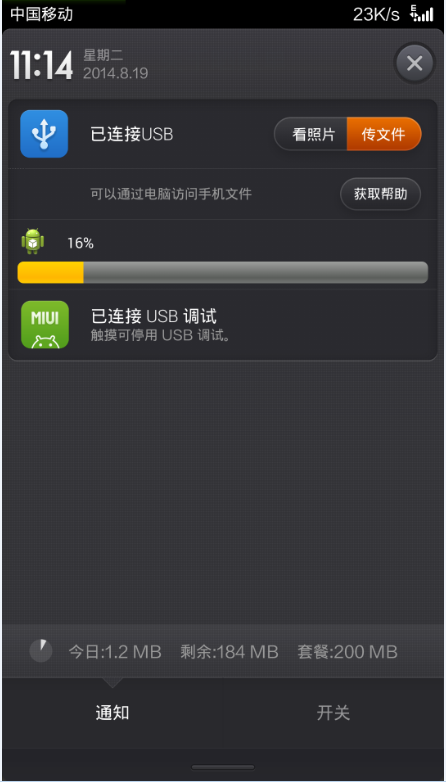編輯:關於android開發
Android 的 monkey test 工具提供了 -f scriptfile 參數,可以指定 test 腳本,然而翻遍了 Android 的網站也沒有找到這個腳本的文檔,最終只在 monkey 的源碼 MonkeySourceScript.java 中找到了一小段注釋,裡面給了一個不到 10 行例子:
- /**
- * monkey event queue. It takes a script to produce events
- *
- * sample script format:
- * type= raw events
- * count= 10
- * speed= 1.0
- * start data >>
- * captureDispatchPointer(5109520,5109520,0,230.75429,458.1814,0.20784314,
- * 0.06666667,0,0.0,0.0,65539,0)
- * captureDispatchKey(5113146,5113146,0,20,0,0,0,0)
- * captureDispatchFlip(true)
- * ...
- */
有了這個例子之後稍微好辦了些,至少有搜索的關鍵詞了,於是用 captureDispatchPointer 很快就找到了一篇自動化測試的文章:
http://qatesttech.wordpress.com/category/android-monkey-script/
(以下是引用)
- "DispatchPointer";"DispatchTrackball";"DispatchKey";"DispatchFlip";這幾個最主要的函數
- 按鍵事件:參見android.view KeyEvent.java
- DispatchKey(downTime, //@param: The time (in {@link android.os.SystemClock#uptimeMillis}) at which this key code originally went down.毫秒
- eventTime, //at which this event happened.
- action, //Action code: either {@link #ACTION_DOWN=0}, {@link #ACTION_UP=1}, or {@link #ACTION_MULTIPLE=2}.
- code, //The key code. 見附錄1, 比如KEYCODE_DPAD_DOWN(20)KEYCODE_DPAD_UP(19)
- repeat, //A repeat count for down events (> 0 if this is after the initial down) or event count for multiple events.
- metaState, //Flags indicating which meta keys are currently pressed.
- device, //The device ID that generated the key event.
- scancode) //Raw device scan code of the event.
- DispatchPointer,DispatchTrackball(downTime, eventTime,
- action, x, y, pressure, size, metaState, xPrecision, yPrecision,
- device, edgeFlags);
- @action The kind of action being performed -- one of either{@link #ACTION_DOWN=0}, {@link #ACTION_MOVE=1}, {@link #ACTION_UP=2}, or{@link #ACTION_CANCEL=3}.
- @param x The X coordinate of this event.
- @param y The Y coordinate of this event.
- @param pressure The current pressure of this event. The pressure generally ranges from 0 (no pressure at all) to 1 (normal pressure), however values higher than 1 may be generated depending on the calibration of the input device.
- @param size: A scaled value of the approximate size of the area being pressed touched with the finger. The actual value in pixels corresponding to the finger touch is normalized with a device specific range of values and scaled to a value between 0 and 1.
- @param metaState The state of any meta / modifier keys that were in effect when the event was generated.
- @param xPrecision The precision of the X coordinate being reported.
- @param yPrecision The precision of the Y coordinate being reported.
- @param deviceId The id for the device that this event came from. An id of zero indicates that the event didn't come from a physical device; other numbers are arbitrary and you shouldn't depend on the values.
- @param edgeFlags A bitfield indicating which edges, if any, where touched by this MotionEvent
- captureDispatchFlip(true)是否打開滑蓋,true是打開
剩下具體每個函數的用法,就只能在源碼裡面慢慢發掘了。另外搜索到一個例子:
http://qatesttech.wordpress.com/2011/05/05/android-my-monkey-script/
- # Start of Script
- type= user
- count= 49
- speed= 1.0
- start data >>
- LaunchActivity(com.mpowerlabs.coin.android, com.mpowerlabs.coin.android.LoginActivity)
- # 3120021258
- DispatchPress(KEYCODE_3)
- UserWait(200)
- DispatchPress(KEYCODE_1)
- UserWait(200)
- DispatchPress(KEYCODE_3)
- UserWait(200)
- DispatchPress(KEYCODE_5)
- UserWait(200)
- DispatchPress(KEYCODE_0)
- UserWait(200)
- DispatchPress(KEYCODE_2)
- UserWait(200)
- DispatchPress(KEYCODE_1)
- UserWait(200)
- DispatchPress(KEYCODE_2)
- UserWait(200)
- DispatchPress(KEYCODE_5)
- UserWait(200)
- DispatchPress(KEYCODE_8)
- UserWait(200)
- # Pin 12345
- DispatchPress(KEYCODE_DPAD_DOWN)
- UserWait(250)
- DispatchPress(KEYCODE_1)
- UserWait(200)
- DispatchPress(KEYCODE_2)
- UserWait(200)
- DispatchPress(KEYCODE_3)
- UserWait(200)
- DispatchPress(KEYCODE_4)
- UserWait(200)
- DispatchPress(KEYCODE_5)
- UserWait(200)
- # Down and enter
- DispatchPress(KEYCODE_DPAD_DOWN)
- UserWait(250)
- DispatchPress(KEYCODE_ENTER)
用法:
adb shell monkey -f <script file> <運行腳本的次數>
例如,我們放一個腳本到 /sdcard/monkey.script,然後運行:
adb shell monkey -f /sdcard/monkey.script 10,那麼這個腳本裡面指定的動作就會被執行10次。
整理的腳本函數列表:
- DispatchPointer(long downTime, long eventTime, int action,
- float x, float y, float pressure, float size, int metaState,
- float xPrecision, float yPrecision, int device, int edgeFlags)
- DispatchTrackball(long downTime, long eventTime, int action,
- float x, float y, float pressure, float size, int metaState,
- float xPrecision, float yPrecision, int device, int edgeFlags)
- DispatchKey(long downTime, long eventTime, int action, int code,
- int repeat, int metaState, int device, int scancode)
- DispatchFlip(boolean keyboardOpen)
- DispatchPress(int keyCode)
- LaunchActivity(String pkg_name, String cl_name)
- UserWait(long sleeptime)
- LongPress()
鍵值列表參見 http://developer.android.com/reference/android/view/KeyEvent.html。
 Android之ListView&Json加載網絡數據,androidlistview
Android之ListView&Json加載網絡數據,androidlistview
Android之ListView&Json加載網絡數據,androidlistview使用到的主要內容: 1、Json 解析網絡數據 2、異步任務加載圖片和數據
 Android中設置TextView的顏色setTextColor,textviewsetcolor
Android中設置TextView的顏色setTextColor,textviewsetcolor
Android中設置TextView的顏色setTextColor,textviewsetcolor tv.setTextColor(Color.parseColor(#
 android不太常用的控件,
android不太常用的控件,
android不太常用的控件,AutoCompleteTextView:是一種與EditText類似的視圖(實際上他是EditText的子類),只不過它還在用戶輸入時自動
 Android程序版本更新--通知欄更新下載安裝,android程序版本
Android程序版本更新--通知欄更新下載安裝,android程序版本
Android程序版本更新--通知欄更新下載安裝,android程序版本Android應用檢查版本更新後,在通知欄下載,更新下載進度,下載完成自動安裝,效果圖如下: